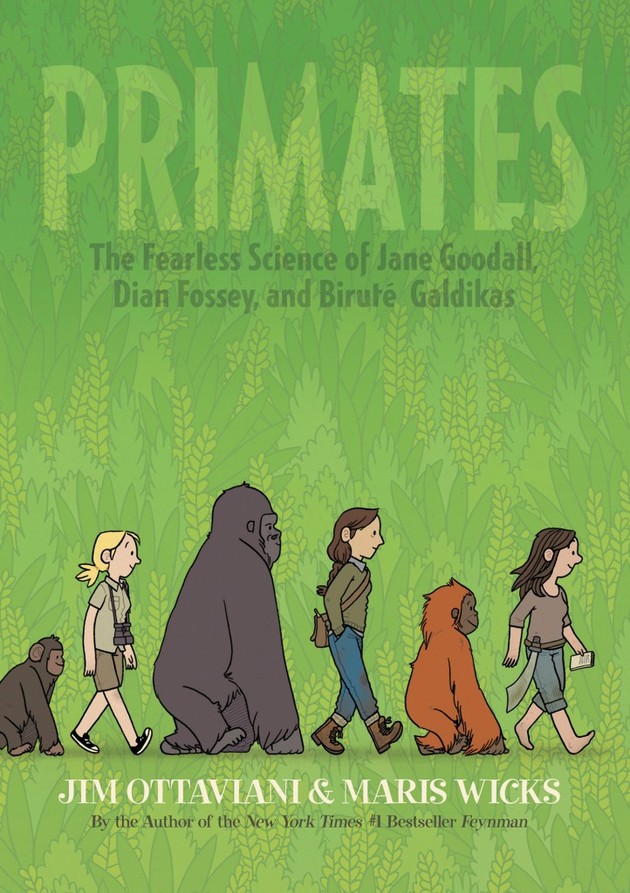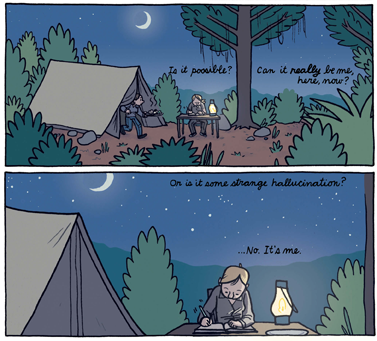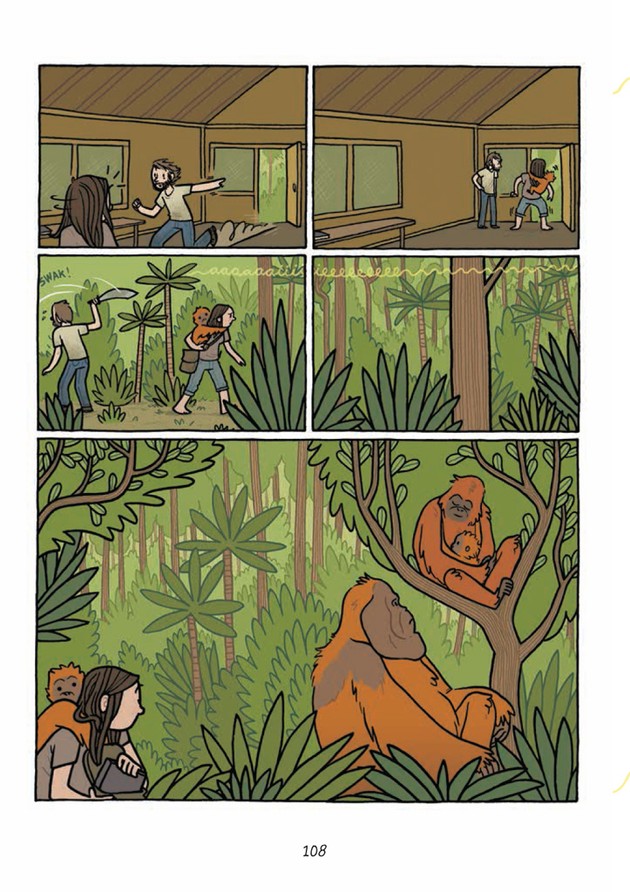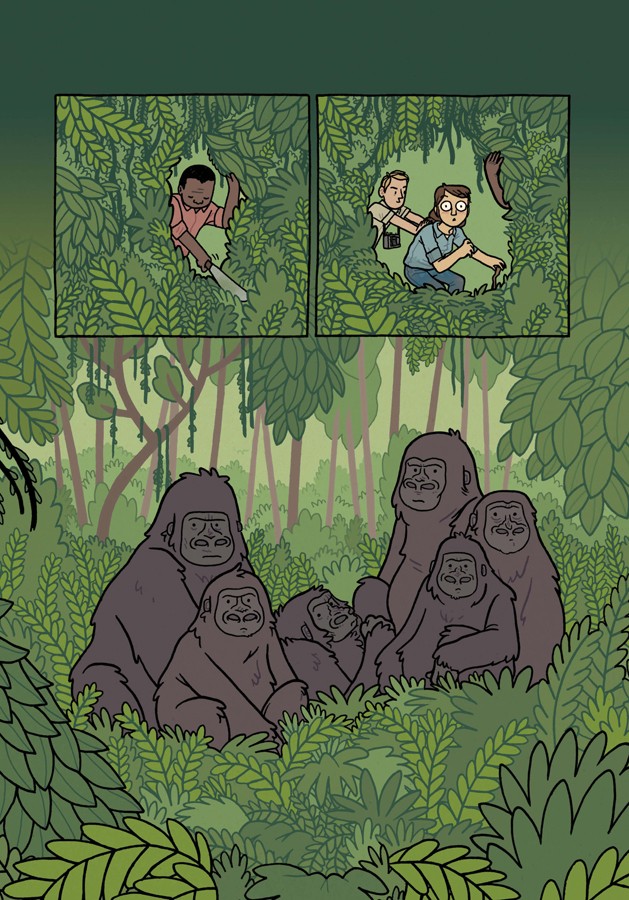“Primates: The Fearless Science of Jane Goodall, Dian Fossey, and Birute Galdikas” Jim Ottaviani & Maris Wicks. Graphic Novel, 140 pages. 2013, First Second Books (8/10)

“Primates” is a book I’ve seen on lists for more than a year now, but it’s taken me a while to get to. I’ve become a fan of Jim Ottaviani’s non-fiction graphic novels over the last few years, and this is another in that same genre. His books are mostly biographies of scientists: Feynman, Bohr, Turing, an anthology of female scientists; also scientific advancements, like the Space Race and paleontology. He manages to blend the biographies of the scientists with their achievements, finding partners in illustrators who can bring life to both the human and the scientific parts of the equation.
This book follows the lives of Jane Goodall, Dian Fossey, and Birute Galdikas, three women whose lives and careers crossed the path of Louis Leakey, famed anthropologist, who aids them on their paths to being the preeminent researchers of primates–apes. I had heard of Goodall (still alive and active in her field and advocacy for primate studies) and Fossey (subject of the book and film “Gorillas in the Mist”), but didn’t know Galdikas at all. The three women conducted “fearless” science in the pursuit of their subjects, sacrificing personal lives and comfort to follow their passion.

The book breaks easily into three sections, each following the course of a scientist and the creatures they studied (and lived with). Goodall with chimpanzees, Fossey mountain gorillas, and Galdikas orangutans. I gotta say, apes kinda freak me out. I had a run-in with a chimp at a birthday party once, and ended up convinced that he was going to climb me and pull out my yellow hair and eat it like a banana. That isn’t what happened, but ever since…I know I’m supposed to like them and think they’re clever or whatever, but they give me the willies. This book may have helped heal some of that damage.
Louis Leakey promoted the causes of these researchers, even though they didn’t have as much education or training as others in their field. Ottaviani implies that some of his interest was because they were attractive young women, and he was a notable philanderer. He also makes clear Leakey’s real reasons: that apes were less aggressive toward females than males, and the women were likely to get closer and earn the trust of their subjects. Their relative lack of education and training also cleared any preconceived notions that the scientists would have; they had the skills and were able to observe the apes, but also did “unscientific” things like assigning the animals names instead of numbers. The relationship and feeling they developed for their subjects is evident in the passion they ended up having for their science — moving beyond a career and into a mission.

Wicks’ style is cartoony, but in a way that makes the complex jungles and animals less distracting from the stories than a more realistic depiction might have been. We bond quickly with the people in the book, and maybe even more quickly with the animals. This is aided by the artwork. In order to tell three different biographies, Ottaviani and Wicks find a short of visual shorthand that moves the stories along quickly. Instead of explaining the lush jungles and family groupings and the foreign sounds of Africa and Indonesia, we’re able to see it.
This was a good read for adults, but is appropriate for readers as young as middle grades. They’ll like the artwork, but they’ll also latch onto the stories of these brave women. If you’ve seen “Gorillas in the Mist,” you know that Fossey “meets a bad end” after going up against the Rwandan government and poachers–and that’s all that Ottaviani gives us about her. We don’t find out how she’s been killed, or even that she’s been killed. It keeps the book feeling safe, but still implies there’s more to her story, giving it a sad note, but not a devastating one.

If you’re a fan of biographies, or science, or (shudder) apes, this is a graphic novel worth your time. Ottaviani’s always a solid choice, but this is one of his more entertaining, engaging books.